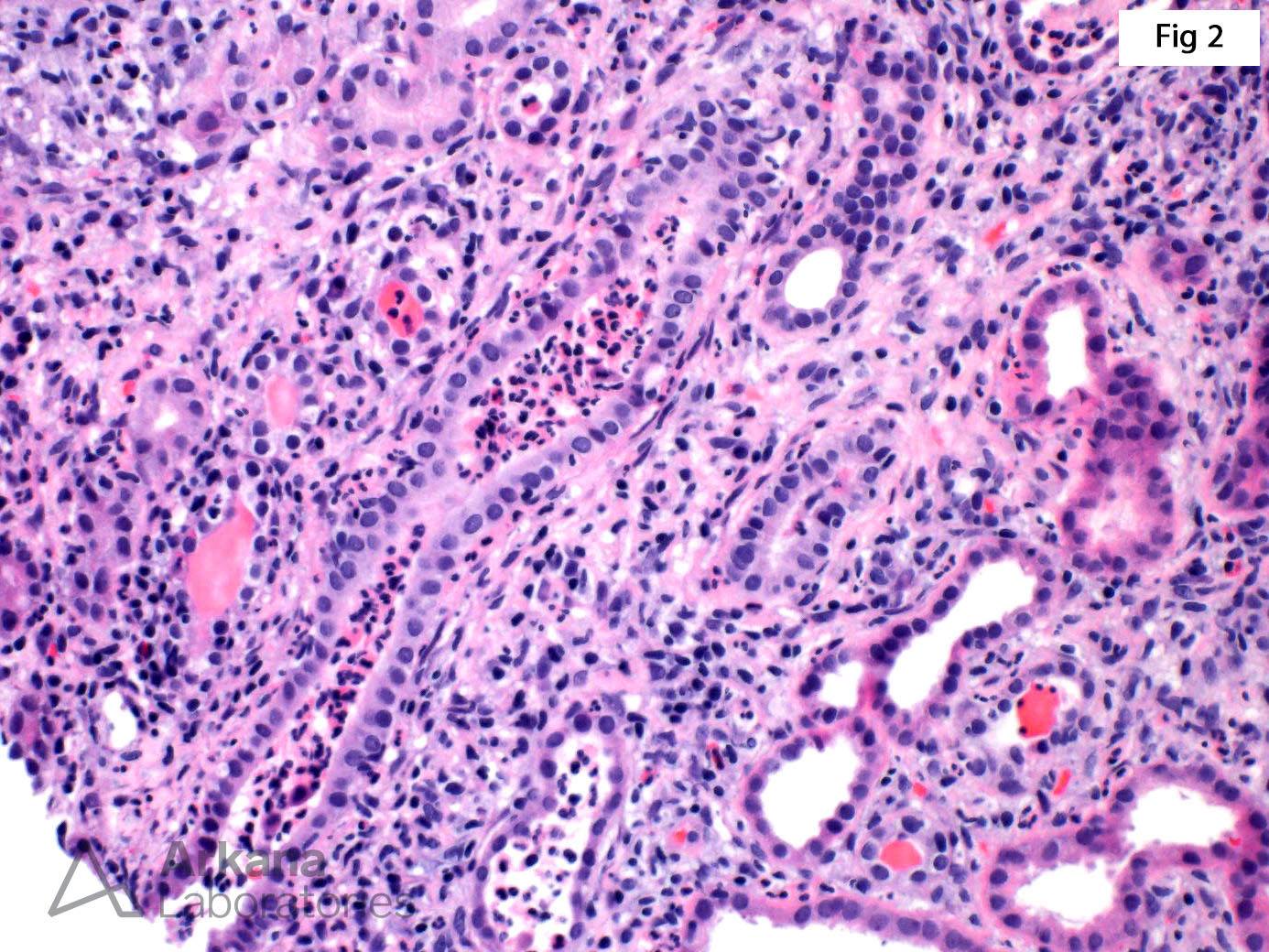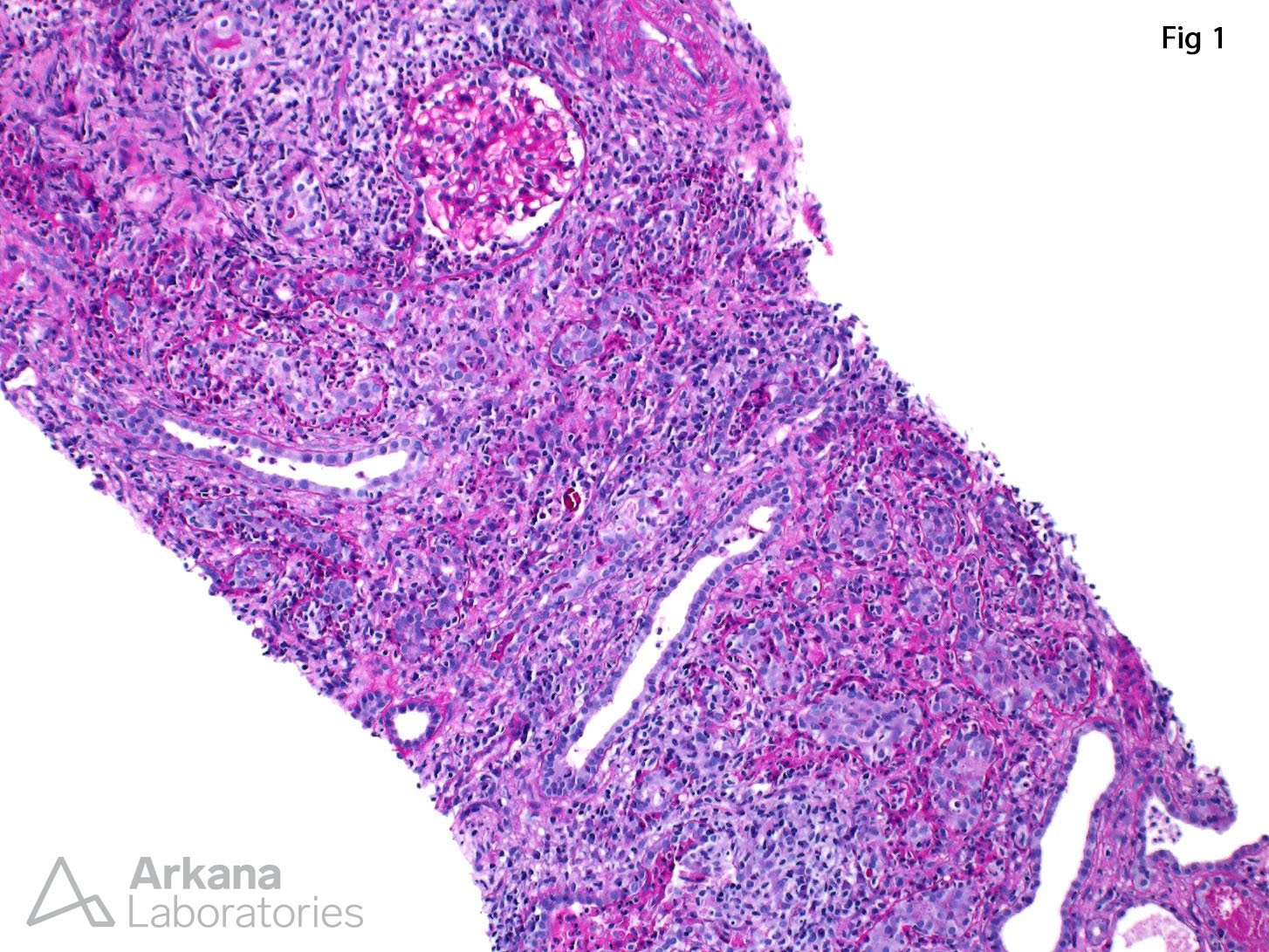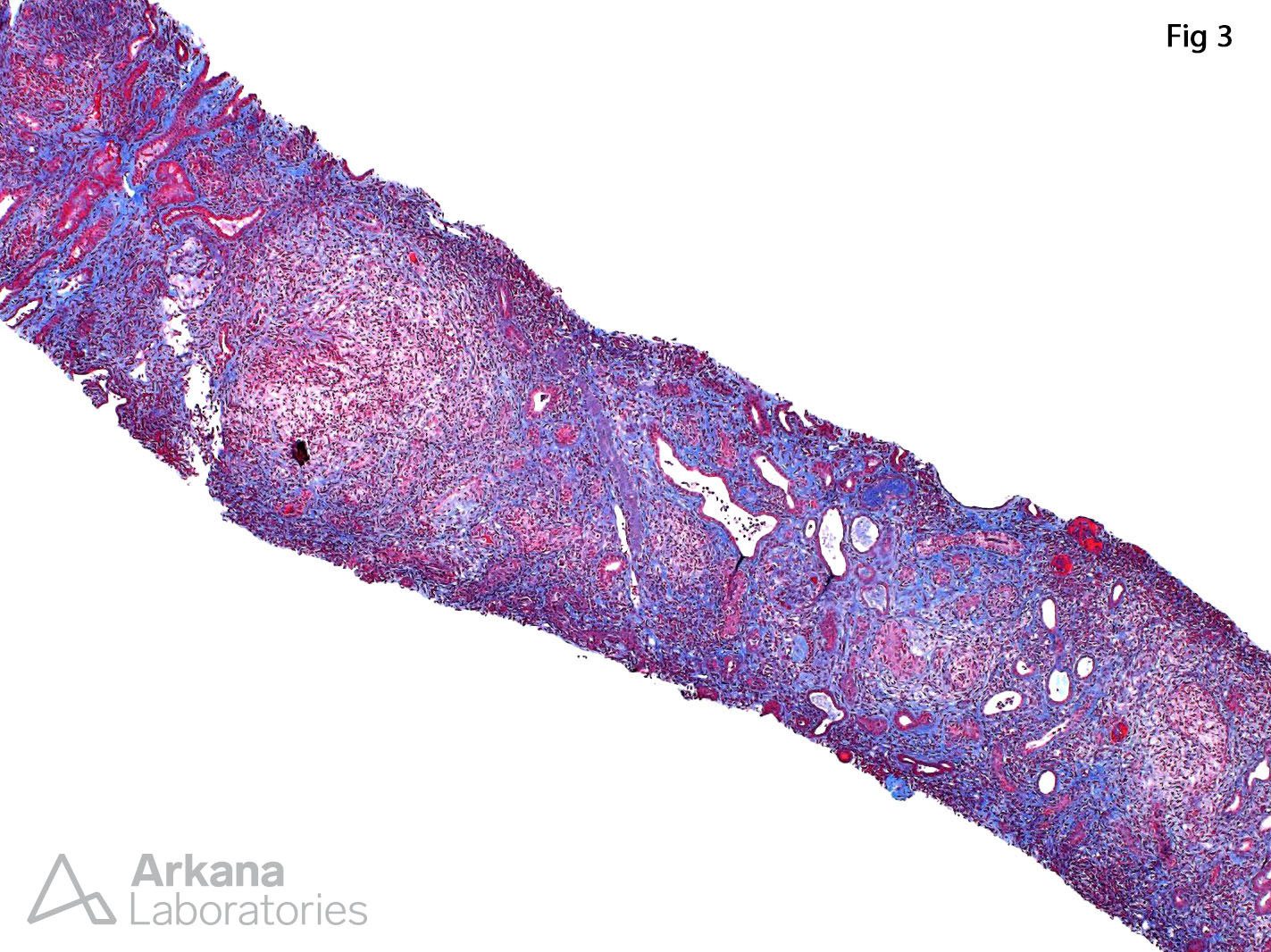Chronic tubulointerstitial nephritis in children may be secondary to a number of possible etiologies such as drug and other exogenous toxin exposure, infections, lower urinary tract obstruction, autoimmune diseases, nephronophthisis and genetic disorders such as autosomal dominant tubulointerstitial kidney disease due to MUC1, UMOD, REN or HNF1β. Figures 1-3 are representative images from the kidney biopsy of a 15 month old male with a history of prune belly syndrome, status post multiple lower urinary tract procedures and recurrent urinary tract infections. There is severe tubulointerstitial scarring which is disproportionate to the degree of glomerulosclerosis, with a moderate, predominantly chronic, interstitial inflammatory cell infiltrate noticed within the areas of interstitial fibrosis. Of note, there is also multifocal evidence of residual neutrophilic inflammation with riming of the tubules, neutrophilic tubulitis and neutrophilic casts, which provides insight into the ascending infectious component of this patient’s renal disease.

Quick note: This post is to be used for informational purposes only and does not constitute medical or health advice. Each person should consult their own doctor with respect to matters referenced. Arkana Laboratories assumes no liability for actions taken in reliance upon the information contained herein.




